Mining is an industry that really doesn’t sound all that entertaining or enigmatic. Rocks, drills, and pickaxes – not much happens in the world of a miner. But when it does – it tends to be spectacular! When a group of Swedish miners got to work in a mine in 1719, they quickly discovered that mining can be quite weird at times. The body of Fet Mats Israelsson was found eerily preserved in a mine shaft. He was missing for several decades at that time. The discovery of his remains was quite the sensation.
A Mystery in the Mine: Who was Fet Mats?
At a first glance, Sweden’s Falun Mine was like any other large copper mine in Europe. Situated in Sweden’s picturesque Dalarna County, this mine had a lengthy history behind it. Rich in copper ore and almost inexhaustible in its resources, Falun was actively operated for roughly 1,000 years!
Work at the mine began in the 10th century AD, and ceased in 1992, making it one of the longest running mines in Europe. What is more, in its heyday, the mine produced roughly two thirds of Europe’s copper needs – which is quite a lot of copper ore nestling in its underground belly. Falun mine was also responsible for funding many of the wars of the 17th century in which Sweden was involved. As such, it was in many ways the pulsating heart of Sweden’s thriving economy.
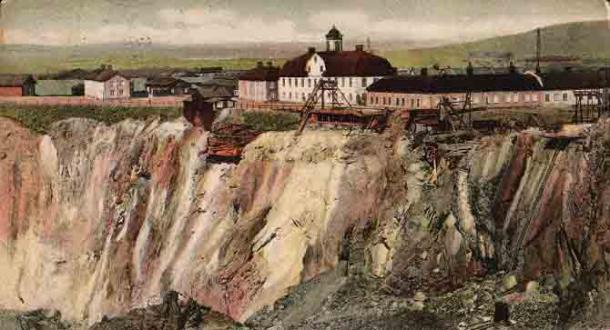
A postcard depicting the Falun Mine, circa 1907. ( Public Domain )
In the early 1700’s, Falun mine was in its prime – and there was plenty of work to be had. Still, taking into consideration the fact that it has been in active use since the 10th century – the medieval period – it could be safely said that the mine is vast, full of nooks and crannies, hidden passages, long lost shafts and ancient chambers. Mines tend to grow and grow and grow – and large and labyrinthine subterranean things like that can be quite an eerie place to be.
And that is exactly what a group of miners realized on a chilly morning of December 2nd, 1719.
It seemingly began just like any other work day. They descend to the earth’s depths, adorn their helmets and gear, grab their tools and their pickaxes, and off they go – in search of a new vein of copper ore to exploit. The world of a miner is a world of perpetual darkness. When you are deep within the bowels of the earth, sunlight remains just a warm memory – one that you grow to crave more and more with each passing hour.

‘Falun Copper Mine’ by Pehr Hilleström. ( Public Domain )
And where there is darkness, there is mystery. A reverberating, echoing noise can all of a sudden sound new and odd – what produced it? A shadow upon the cave wall can seem out of proportion and frightening – who cast it? Is that a shape skulking in the distant corner – or am I just too tired from work? When you spend too much time in a dark place, fear becomes a part of you – and mystery is just one step away from fear.
Miners Discover More Than Ore
That December morning started off routinely. A group of miners descended to their workplace and began work on a so-called “chair” – a timbered mine tunnel – which lay at a depth of eighty two fathoms (147 meters; 483 feet). This timbered tunnel (walls lined with logs) lay between two major mine shafts, known as the Wrede’s shaft and Mårdskinnsfallet.
The latter shaft, known also as the Mårdskinns Mine , has not been in use for a very, very long time – and was therefore completely flooded with water. As the work of the miners at the so-called “chair” progressed, a routine error caused them to break through the cave wall and into the Mårdskinnsfallet shaft. At once, the water that was in it flowed out and dispersed around. But water was not the only thing to come out of that forgotten shaft…
What lay before the feet of the weary miners was – a corpse. Pale and eerily preserved, a dead body flowed out with the water through the collapsed wall. Frightened and stunned, the miners took a closer look: it was seemingly the body of a perished miner. Both of the legs on the corpse were completely cut off. But one thing was puzzling – to say the least. The body was completely preserved!
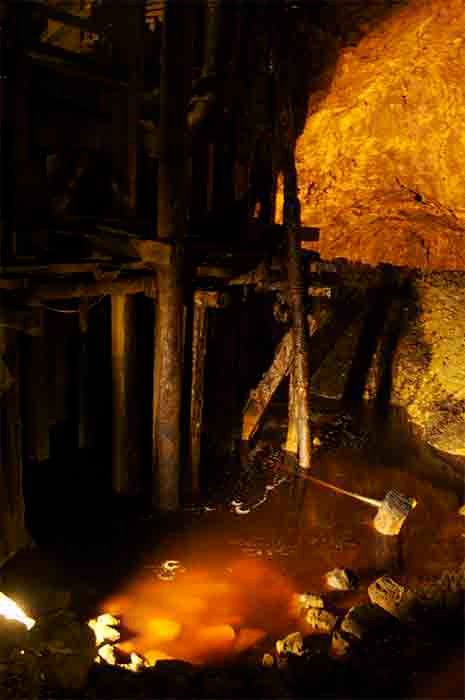
Falun copper mine underground “copper river.” (bluecoomassie/CC BY-NC-ND 2.0 )
The dead man’s face, hair, hands, and the clothes he wore – all were superbly preserved and showed not even the slightest trace of decay or deterioration. To the miners this was the biggest enigma – it was certain that the body lay in the water-filled Mårdskinns shaft for a very long time. Yet it didn’t rot.
They even found a brass tobacco box in the man’s pocket with a preserved piece of tobacco inside it. Flushed and frightened, the miners alerted the authorities. It turned out that the old Falun mine was hiding more than copper ore in its subterranean cavernous vaults.
Everyone was puzzled. No one had been reported missing recently, so the body was quite a mystery. A mystery that had to be solved. Perhaps a murder was at hand? A crime concealed? Theories began surfacing.
Initially, it was mostly agreed upon that this was the body of an unfortunate miner who had perished due to a landslide or a similar accident that occurred in the Mårdskinnsfallet mine shaft. Still – who was the man? No miners were recently reported missing and everyone was accounted for. For this reason, a special assembly was established in order to investigate the enigmatic body. Known as a Gruvting, this was a special mining court. Due to their importance in Sweden at the time, mines had a special jurisdiction and a special court. And so a proper and serious investigation soon began.
The Evidence Comes Forward – Mats Israelsson Identified
Anders Swab, a renowned scholar, miner, and assessor of the Royal Mining College of Stockholm was the main figure in this investigation. His surviving letters and documents from the court provide a valuable and historic insight into the case of Fet Mats and the Falun Mine mystery. The first thing the people needed to figure out was how the body was so well preserved?
Upon discovery, the body was lifelike, almost fresh. However, when taken above the ground, the dead man soon dried and – according to contemporary accounts – became “hard as wood”. His features were preserved, but he was hard as stone.
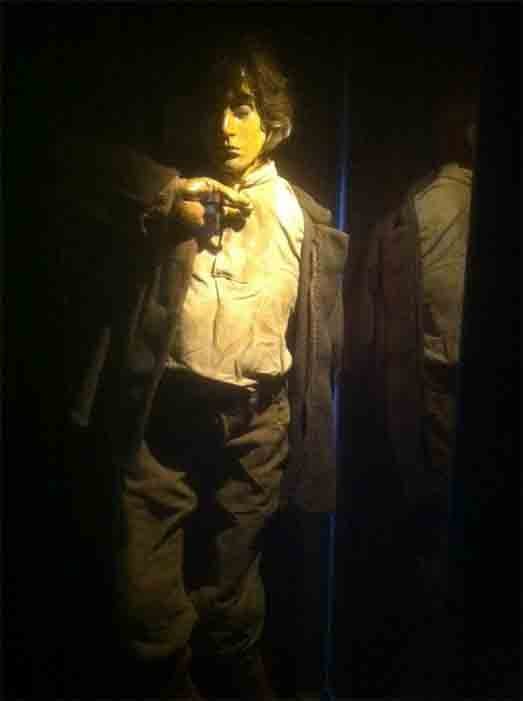
Replica of Fet Mats Israelsson, Falu Grava Visitors Center, Falun, Sweden. ( Tidsspegeln)
Thanks to the insights from medical examiners and naturalists of the time, it was soon agreed that the water in the collapsed mine shaft had a high consistency of vitriol. Commonly found in copper mines, it was this powerful sulfuric acid that preserved the body so well. After turning into “stone”, the body became known as the “petrified miner”, and remained uncorrupted.
The main goal of the investigation was to discover who this unfortunate man was and when he perished. By December 10th, 1719, a court investigation was well underway. Soon enough, after the body was observed, the first insight came forward. It was provided by a miner named Måns Hansson from Korsgården.
The miner came forth and claimed that he recognized the dead man, announcing that the poor soul was Matts Israelsson, who was known amongst the miners as “Fat Matts” ( Fet Mats ) or “Big Matts” ( Store Matts ), due to the fact that he was a big and robust man. Måns Hansson further told in his testimony that the deceased Fet Mats was born in the village of Boda, located in the Svärdsjö parish, which is some 20 km (12.43 miles) northeast of Falun mine. Late Fet Mats had – at some point in his youth – taken a job as a miner with a local miner’s farm – Dikarbacken , before ending up as a miner in the Falun Mines proper.
The miner, continuing his testimony, claimed that he remembered vaguely, when and how Fet Mats died. He claimed it happened in 1676, in the autumn, when Mats Israelsson descended alone into the Mårdskinnsfallet shaft. He did so standing on a barrel that was used to transport ore. The man never returned, and it was assumed he perished deep in the shaft: descending via a barrel was particularly dangerous, especially if a miner descended all alone.
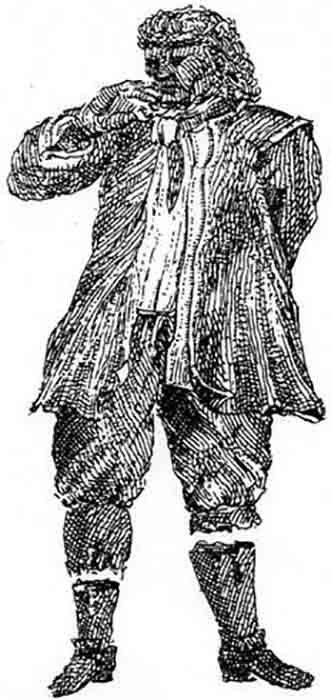
Drawing of Fet Mats Israelsson from Leyel, 1722 & Wiman, 1941. (James St. John/ CC BY 2.0 )
A Woeful Widow Tells Her Tale
Thus far, the testimony of this miner was accurate. When the court committee asked him how he could be so certain of the year, the man simply swore that his own father died in February of 1677, and that Fet Mats perished the autumn before that. With that testimony, the first pieces of the puzzle appeared. Soon after, two mining bailiffs also came forth – Erik Michelsson and Erich Pehrsson – both claiming that they also recognized the deceased to be Fet Mats Israelsson who used to work at Dikarbacken. Still, they could not remember when the man died exactly.
The next big revelation in the investigation came about with the next testimony, this time from a woman named Margreta Olsdotter. An aged widow, she stated that she was married several times in her life, and that when she was very young she was engaged to be married to Mats Israelsson. Things were looking good for them, but the man mysteriously disappeared without a trace. After a few years she married someone else.
Mrs. Olsdotter also claimed that the previous witness, Mr. Hansson, made an error: she said that Fet Mats didn’t disappear in 1676, but in the spring of 1677 – more specifically, 14 days before Good Friday. She claimed that her fiancé Mats went down the Mårdskinnsfallet shaft in order to light the fires that were used to illuminate the mining shaft (as there was no electricity at the time). He descended to do this as a replacement for a colleague.
Thanks to these detailed testimonies, the court was quickly appeased. On December 10th, the final verdict was brought, stating that the deceased man was Mats Israelsson, known as Fet Mats, a miner who had perished alone sometime between the autumn of 1676 and the spring of 1677. The reason for his demise was simple to explain – mining work in the late 1600’s was a particularly dangerous job. In those days, there were several ways one could descend into a mine shaft. Usually this was done by way of simple ladders or stone steps carved into the rock itself.
The Mystery of the Missing Coin
However, the simplest, fastest, and the most dangerous method of all was by way of a transporting barrel. A barrel would go down the shaft and transport ore, while the miner would stand on its edge – the risk was immense, but it was quick. It is easy and safe to assume that poor Fet Mats made an error – perhaps he lost his balance while standing on the edge during descent and he fell down into the dark depths of the shaft, where the transport barrel probably sheared off his legs.
There is another little bit of a mystery that continues to surround the unfortunate fate of Fet Mats. Miners in Sweden had a peculiar and popular tradition – whenever they were working, they would carry a silver coin – the so-called riksdaler – as an amulet around their neck or in a pocket. They were almost always carried when descending into dangerous shafts, with the belief that the coin would bring luck and protect the men from accidents.
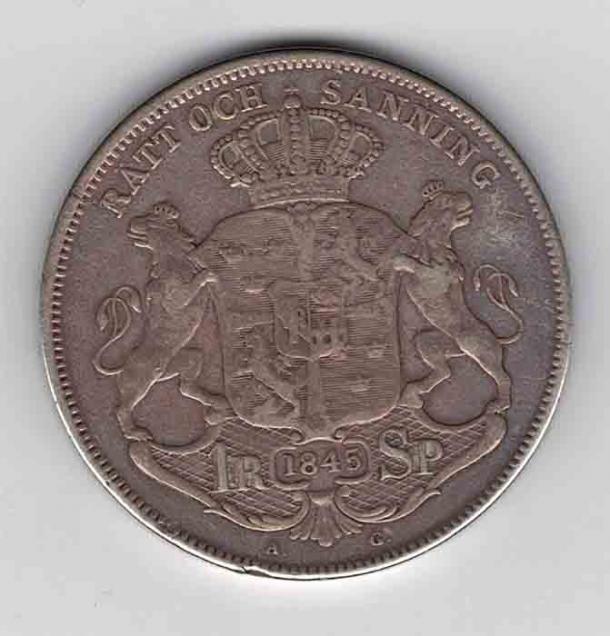
A riksdaler from 1845. (Agria/ CC BY-SA 3.0 )
And they almost always carried them when descending on a barrel-edge. However, when Fet Mats’ body was discovered in 1719, roughly 43 years after he disappeared, no coin was found on his person. They did, however, find a tobacco box with tobacco that was still fresh – but no silver coin.
This lack of a lucky coin turned into quite a mystery – many speculated that Fet Mats didn’t bring a lucky coin on that fateful day, and that is why his barrel descent had such a bad end.
Remembering an Unfortunate Ancestor
Today, the surviving relatives of Fet Mats Israelsson still live a normal life and preserve the memory of their unfortunate ancestor. Bertil Israels, born in 1946, lives in the Boda village in Svärdsjö, on the very farm where Fet Mats was born and grew up. The farm is called Israels-gården , and had that name for a very long time. Bertil Israels is a direct descendant of poor Mats – a ninth generation descendant to be exact.
Curiously enough, Mr. Bertil Israels keeps two special coins in his home. One is a silver riksdaler coin from 1677, and the other is a smaller coin minted in 1719. These two coins have always been kept and cared for by the descendants of Fet Mats, generation after generation. Bertil says that his own grandmother told him the tale that the fiancée of Fet Mats, Margreta, gifted these two coins to the relatives of her deceased fiancé, requesting that they cherish these coins and never separate them.
And so the story of the mysterious “petrified miner”, Fet Mats Israelsson, comes to an end. A true natural mummy, this poor man became quite a wonder – even so many years after his demise. Perfectly preserved from the vitriol, his body was kept on display for 30 years, and was eventually buried under a simple gravestone in the local church yard. But the story of his disappearance still remains and is quite a thrilling tale of a quirky mystery!
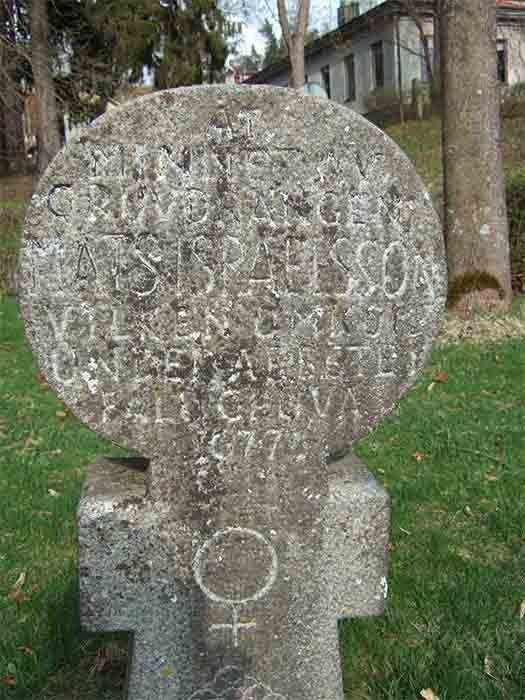
Fet-Mats Israelsson’s gravestone in Falun, Sweden. In English, a translation the text says: In memory of the miner Mats Israelsson who died during work in the mine of Falun 1677. ( Public Domain )
Top Image: Replica of Fet Mats Israelsson, Falu Grava Visitors Center, Falun, Sweden. ( Tidsspegeln) Inside Falun copper mine. (bluecoomassie/ CC BY-NC-ND 2.0 )
By Aleksa Vučković
References
Baedeker, K. 1882. Norway and Sweden: Handbook for Travellers. Karl Baedeker (firm).
Jansson, B. G. 2010. Fet-Mats: Den förstenade gruvdrängen i sakprosa och som inspirationskälla till dikt och konst från 1719 till 2010. Dalarna University.
Wolfgang, P. 1970. Mining Lore: An Illustrated Composition and Documentary Compilation with Emphasis on the Spirit and History of Mining. Morris Printing Company.
Related posts:
Views: 0
 RSS Feed
RSS Feed

















 April 18th, 2021
April 18th, 2021  Awake Goy
Awake Goy  Posted in
Posted in  Tags:
Tags: 
















